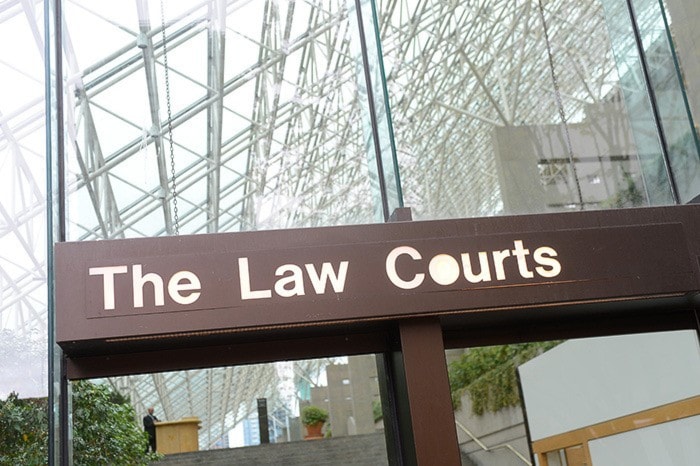During the six-and-a-half years since six men were executed in a Surrey apartment building, there have been approximately 1,200 police investigators who have worked on the so-called Surrey Six case in some capacity.
The figure was offered by RCMP Staff Sgt. David Teboul, who took the stand for the second time since the mass murder trial began in Vancouver late last September.
Teboul said while that many officers may have “touched” the case from the outset, he estimated there were between 60 and 120 investigators involved at any one time.
Teboul testified in October and was called back for cross-examination Thursday, which marked the resumption of the lengthy trial after a five-week break.
Cody Haevischer and Ma tthew Johnston are on trial in B.C. Supreme Court, accused of six counts each of first-degree murder for the Oct. 19, 2007 deaths of Christopher Mohan, Edward Schellenberg, Ryan Bartolomeo, Edward Narong, and brothers Corey and Michael Lal. They also face one charge each of conspiracy to murder Corey Lal. Both have pleaded not guilty.
tthew Johnston are on trial in B.C. Supreme Court, accused of six counts each of first-degree murder for the Oct. 19, 2007 deaths of Christopher Mohan, Edward Schellenberg, Ryan Bartolomeo, Edward Narong, and brothers Corey and Michael Lal. They also face one charge each of conspiracy to murder Corey Lal. Both have pleaded not guilty.
Co-accused Michael Le pleaded guilty to conspiracy and was sentenced in December.
Teboul was “file coordinator” – a role he described as a management position – for the Surrey Six investigation. At the time, he was working with the Integrated Homicide Investigation Team (IHIT), where he’d taken a position in 2003. (He is now a staff sergeant in charge of anti-corruption with RCMP "E" Division).
Teboul said while IHIT takes charge of murder files throughout the Lower Mainland, Surrey is a “frequent flyer...a frequent customer.”
The Surrey Six case was “by far” the largest case he’d ever worked on.
Haevischer’s defence lawyer Simon Buck questioned Teboul about “holdback,” which the RCMP officer explained is evidence that’s deemed particularly specific or valuable because only investigators or perpetrators of a crime would know about it.
In the Surrey Six case, Teboul said, holdback information included the make and model of ammunition used, as well as which guns were used to kill which victims.
There were six victims and the Crown contends two guns were used in the murders.
Buck questioned Teboul about a police briefing the day after the murders where an officer spoke about holdback information being leaked. Teboul said he had only a “vague recollection” of the discussion.
Prior to the lunch break Buck began to ask Teboul about another briefing Oct. 20 when investigators were told to “BOLF” a BMW. BOLF is an acronym for “be on the lookout for.”
Earlier in the trial, a witness testified seeing a black BMW in the parkade of the Balmoral Tower where the murders took place. She said she saw two men with black gloves get out of the car while a third man held a door to the building open nearby. The Crown alleges Haevischer, Johnston and a third man took a BMW matching the description of Haevischer’s car to the Balmoral on the day of the murders.
The Crown’s theory is that Corey Lal was dealing drugs in the area, which raised the ire of members of the Red Scorpion (RS) gang because it was on their turf. The Crown alleges RS leader Jamie Bacon and Le ordered Haevischer, Johnston and another man (who can’t be named due to a publication ban) to kill Corey Lal, and the five others were shot to eliminate any witnesses.
The trial continues.
